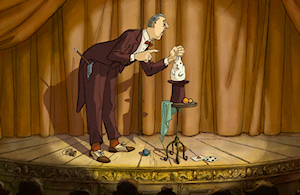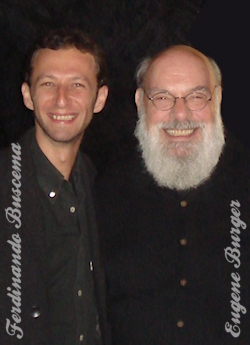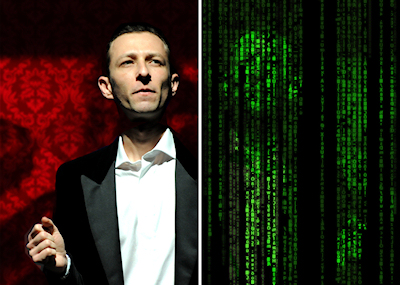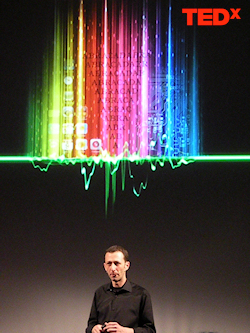 The world is full of magicians who are eager to demonstrate their abilities. As soon as they get a chance, they immediately commence with the classical invitation: “Pick a card!”. Usually – and partly driven by kindness – we tend to go along with the magician without objections, though it would also be perfectly reasonable to reply: “Why should I?”.
The world is full of magicians who are eager to demonstrate their abilities. As soon as they get a chance, they immediately commence with the classical invitation: “Pick a card!”. Usually – and partly driven by kindness – we tend to go along with the magician without objections, though it would also be perfectly reasonable to reply: “Why should I?”.
When a magician enters our space, he casts us into an outdated dimension, where good education requires obedience and a final burst of applause. Faking interest towards the performance of an improvised magician is often just an act of mercy. But is such secular magic really doomed to degenerate into a sad caricature of its former uncanny glory?

In the last few decades, a small group of “Illuminati” magicians became aware of this state of affairs, and asked themselves a central and key question: can we still evoke a sincere feeling of astonisment in a disenchanted modern audience? Or are we condemned to an eternal reliance on their paternalistic sense of compassion?
Certain reflections on this theme culminated in the publication of the book Magic and Meaning, by Eugene Burger and Robert E.Neale. The pivotal word here is “meaning”. Presenting an historical analysis of the art of conjuring through the centuries, the two authors demonstrate a progressive detachment from the meaningful context in which the first magic effects where born.
Back when people had to hunt to survive, the production of a live animal from nowhere was a magical feat with vital implications. Today, making a rabbit appear from a top hat seems like the incongruous meeting of an antiquated fashion item and an animal rarely seen in our urban centers. The progressive emptying of meaning of magic tricks turned them into pathetic evocations of past scenarios, making conjuring one of the favorite targets of modern TV satire.
In our country, there are very few magicians who are sensitive to the coupling of Magic and Meaning; among them, and one of the most appreciated internationally, is Ferdinando Buscema.
Ferdinando embodies the ancient role of the Magician even as he presents a modern revision, declaring himself a Magic Experience Designer, a sort of “architect” of magical emotions and perceptions. Adopting an elegant and minimal style, his Twitter profile doesn’t make any reference to magic tricks, playing cards or colored silk scarves. Instead we read:
Translating noise into signal, making meaning out of chaos

Here Ferdinando points only to the ability to convert noise into signal, aiming the spotlight towards the meanings that emerge from pure chaos. In this – he thinks – resides the essence of Magic, a word that he consciously dissociates from adjectives like “ceremonial” or “secular” in order to avoid limiting the natural and fertile ambiguity of the word.
Ferdinando is as comfortable appearing between the red velvet curtains of theaters as he is in cold universities classrooms, because his style and his messages are totally transversal. A mechanical engineer interested in hermetic traditions, Buscema comfortably surfs through the pages of digital technologies manuals as well as grimoires of esoterica. As a seasoned story-teller, he offers his audience anectodes and tales involving avant-garde artists, niche scientists, prog-rock groups, social psychologists, techno-shamans and fictional characters. And though the overall impression is that of a multi-faceted jazz of ideas coming from a variety of branches of knowledge, every one of his “magic acts” is characterized by a surprising economy of words and an elegant linearity. What strikes many spectators in particular is his attention to the personal relevance of every theme he deals with. According to the context in which he performs, Ferdinando shows an uncanny ability to calibrate themes, concepts and experiences to the specific audience with which he is interacting.
On one occasion, Ferdinando devoted a few minutes of his show to reading a page out of a popular novel, totally breaking all the rhythms of a classic magic show. Peter Samelson, incredulous and enthusiastic, pointed out in his review:
I don’t think I’ve ever seen a magician read from a book to the audience and have them love it. And they did.

Those who have had the fortune of following Ferdinando’s artistic evolution recognize the continual process of distillation through which he passes every one of his magic effects. For Buscema, “less is more”. The final result of this alchemical process is a type of “minimal” magic that readily finds a place in various and unusual venues. Ferdinando performs in corporate training contexts, lectures at academic conferences, and was the first magician invited to partake in an Italian TEDx event. Some of the world’s most refined and knowledgeable magicians – such as Max Maven, the aforementioned Eugene Burger, and Jeff McBride – recognize Ferdinando’s innovative style and regularly invite him to perform in the USA. He has performed at the Magic Castle in Hollywood, and more recently at Monday Night Magic in New York.
Ferdinando is the director of an orchestra made up of subtle techniques -- narrative, manipulative, psychological and conceptual -- whose management requires the ability to deal with exponential degrees of complexity. As though navigating a labyrinthine quadrimensional matrix, Buscema distinguishes himself for his extraordinary ability to design unusual and meaningful paths, made accessible through the crystal clear linearity of his style. The multiple levels of interpretation of his pieces and his citationist style are elements that wink at a postmodern aesthetics, making him suitable for a sophisticated contemporary audience searching for magical experiences that resonate with the times.
Finally, Ferdinando is one of the few illusionists who have interiorized one of the features characterizing art in the third millenium, which Banksy expressed in his artistic manifesto:
Artwork that is only about wanting to be famous will never make you famous. Any fame is a by-product of making something that means something.
Many thanks to Erik Davis for his translation review.
BY-NC-SA 4.0 • Attribution-NonCommercial-ShareAlike 4.0 International